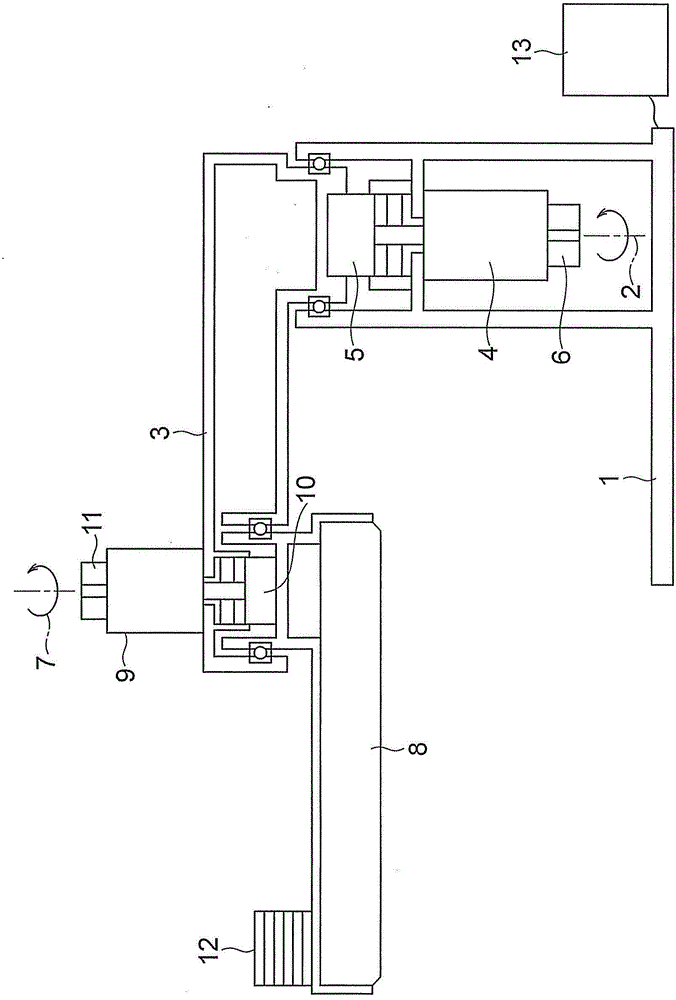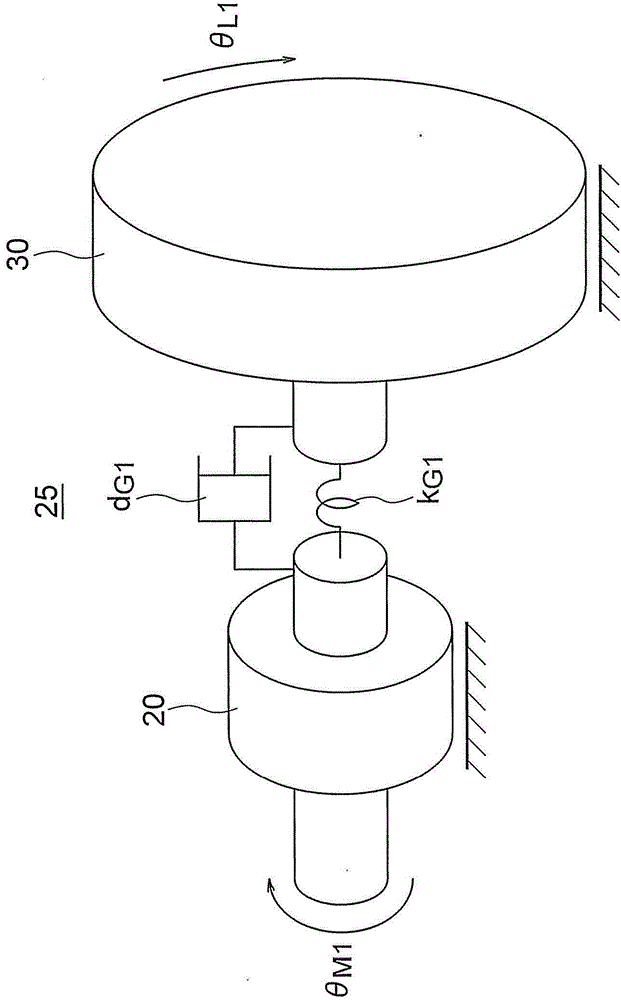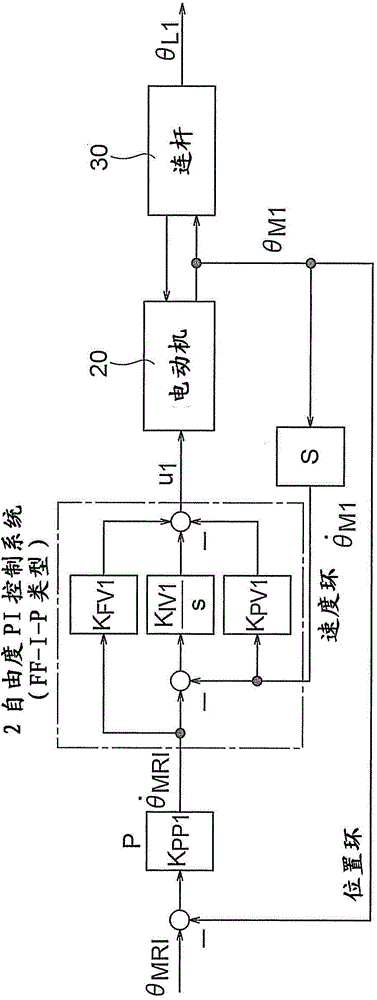Robot control device
A control device and robot technology, applied in the direction of program control, general control system, program control manipulator, etc., can solve the problems of high cost, reduced vibration suppression effect of vibration suppression control, large amount of wiring, etc.
- Summary
- Abstract
- Description
- Claims
- Application Information
AI Technical Summary
Problems solved by technology
Method used
Image
Examples
no. 1 example
[0080] Figure 5 A viewer of the robot controller according to the first embodiment is shown. The observer 200 of the first embodiment includes first axis and second axis PI controllers 201 and 202, a dual link arm nonlinear dynamic model 203, integrators 204a, 204b integrating the output of the nonlinear dynamic model 203 , 204c, 204d, 205a, 205b, 205c, and 205d. The PI controller 201 is based on the speed dθ of the motor driving the first shaft M1 / dt performs PI control with respect to the deviation of the estimated value of the rotation angle of the motor driving the first shaft. PI controller 202 is based on the speed dθ of the motor driving the second shaft M2 / dt performs PI control with respect to the deviation of the estimated value of the rotation angle of the motor driving the second shaft. The dual-link arm nonlinear dynamic model 203 estimates the angular acceleration of the first and second links based on a nonlinear dynamic model based on the output of the P...
no. 2 example
[0114] Figure 10 A robot controller according to a second embodiment is shown. The control device of this second embodiment has a function of controlling the feedback of the angular acceleration of the link through growth and stabilization of inertia, and a function of calculating a gain of the feedback control.
[0115] The aforementioned drop in inertia occurs not only when the end effector load is small, but also when the posture of the robot arm changes. For example, in a two-link robotic arm, the inertia around the first axis decreases as the angle of the second axis becomes larger. In view of this, the reduction of inertia due to posture changes should be compensated by link angular acceleration feedback.
[0116] If the inertia reduction from the maximum value of the (1,1) component of the inertia matrix as shown in equation (3) is considered in the dual-link robot arm, equation (12) is established.
[0117] k AV1 =2γ(1-cos(θ L2 ))n G1 (12)
[0118] Accor...
no. 3 example
[0129] Figure 11 A viewer of the robot controller according to the third embodiment is shown. The observer 200A of the third embodiment and Figure 5 The observer 200 of the illustrated first embodiment is the same except that a physical parameter switching unit 206 is further included. like Figure 11 As shown, the observer 200A of the third embodiment uses the physical parameter switching unit 206 to perform the calculation for the nonlinear dynamic model 203 with respect to the change of the end effector load and the change of the friction force accompanying the change of the end effector load. Switching of physical parameter sets (gain scheduling) so that vibration suppression performance becomes robust regardless of end-effector load and friction variations in the robot. To explicitly switch physical parameter sets, for example, robot language such as "Payload (5kg)" is entered and used when the end effector load is changed. Physical parameter sets include mass, mome...
PUM
 Login to View More
Login to View More Abstract
Description
Claims
Application Information
 Login to View More
Login to View More - R&D
- Intellectual Property
- Life Sciences
- Materials
- Tech Scout
- Unparalleled Data Quality
- Higher Quality Content
- 60% Fewer Hallucinations
Browse by: Latest US Patents, China's latest patents, Technical Efficacy Thesaurus, Application Domain, Technology Topic, Popular Technical Reports.
© 2025 PatSnap. All rights reserved.Legal|Privacy policy|Modern Slavery Act Transparency Statement|Sitemap|About US| Contact US: help@patsnap.com



